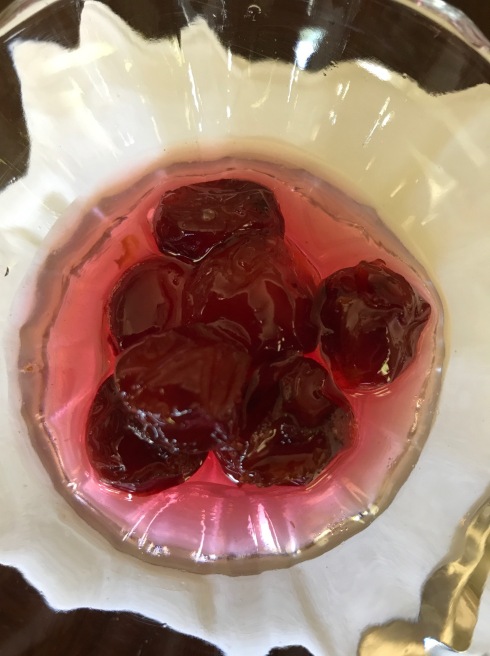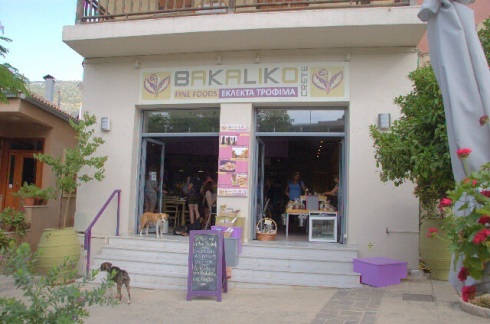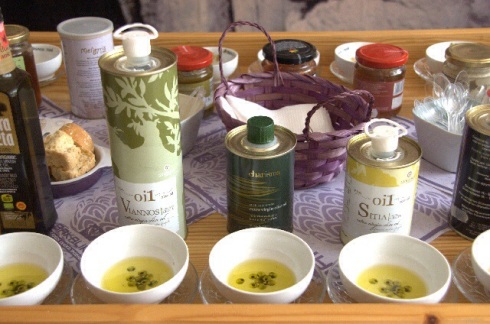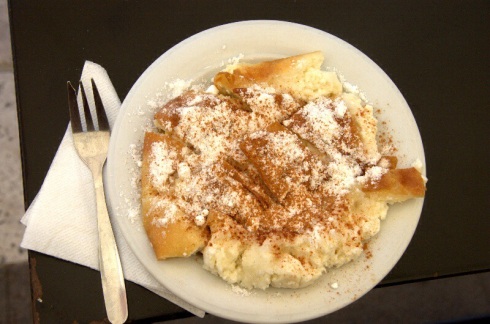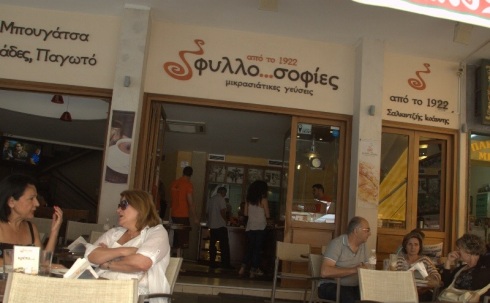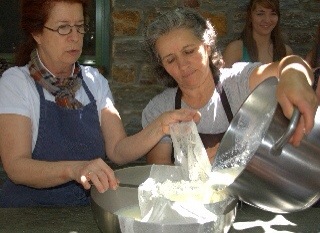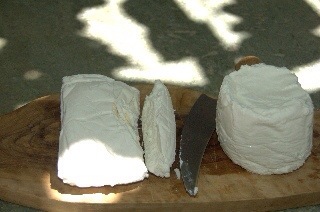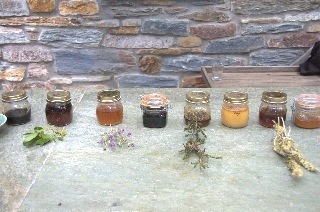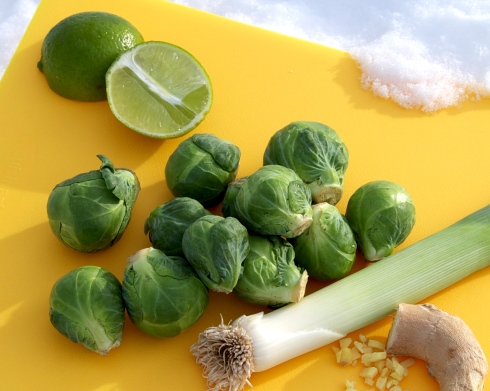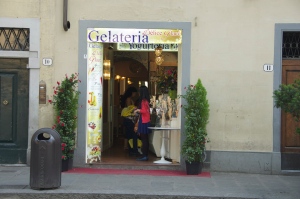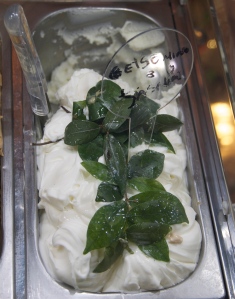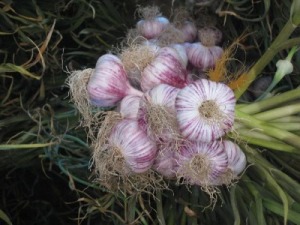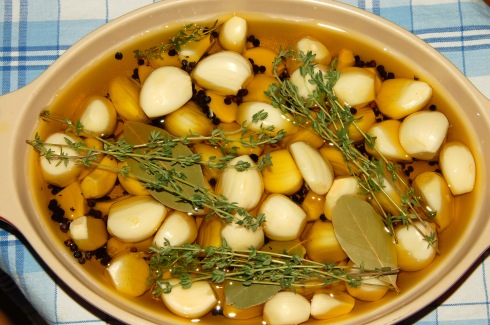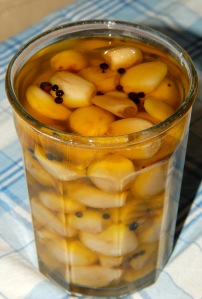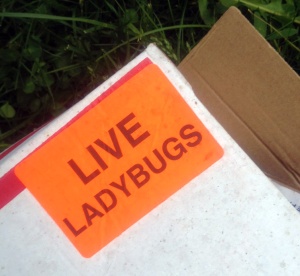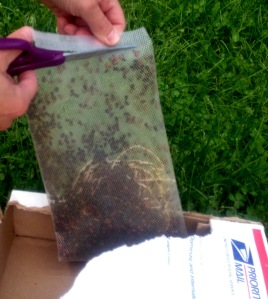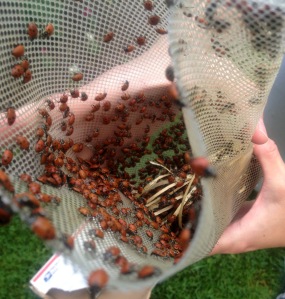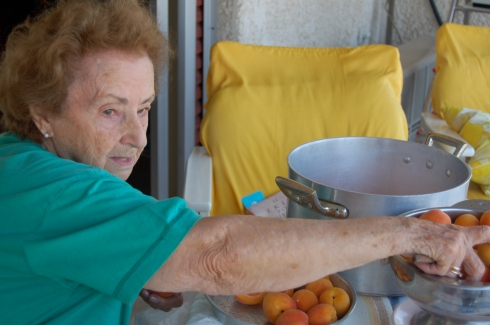
Yiayia, making apricot marmalade on her balcony in Edipsos, 2007.
My grandmother died this past December, a week shy of her 99th birthday. In her last months, she told me what her mother, in her waning years, had told her: “When I’m gone, you will think of me everyday.” They were both, of course, right.
This weekend, fridge crowded with bowls of pick-your-own Door County sour cherries, I thought of Yiayia and wished she were here to show me how she used to make Vyssino, the sour cherry spoon sweet preserved in jars that she tucked away on the upper shelf of the china cabinet, ready to serve on small crystal plates with cold glasses of water to evening house guests. She was a very attentive cook, and I know she would have had a special ingredient or, more likely, a special technique, to make the dish that much more delicious, that much more appealing.
But needs must, I turned to the Internet and after searching and combining, I was able to make my first jar of Vyssino — and I do believe that Yiayia, her spirit in my kitchen, took a tentative taste, then slowly nodded, and was proud.
Vyssino From Tart Door County Cherries
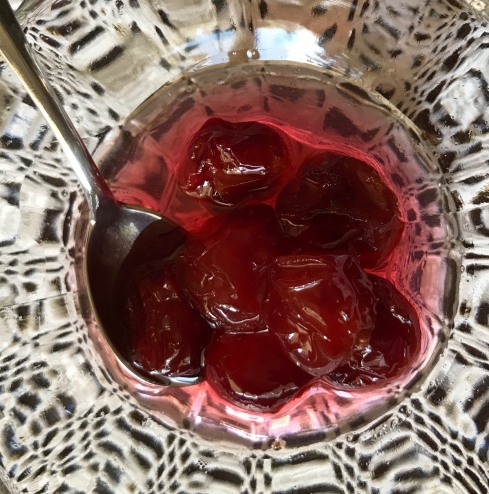
- 2 pounds tart cherries, pitted
- 2 cups granulated sugar
- 1/2 cup water
- 1/2 teaspoon vanilla
- Juice from one small-to-medium lemon
Clean and pit the cherries, placing them into a large bowl.
Once all of the cherries are pitted, place a single layer of cherries in the bottom of a 4-quart saucepan then cover the cherries with some of the sugar. Repeat with the remaining cherries and sugar.
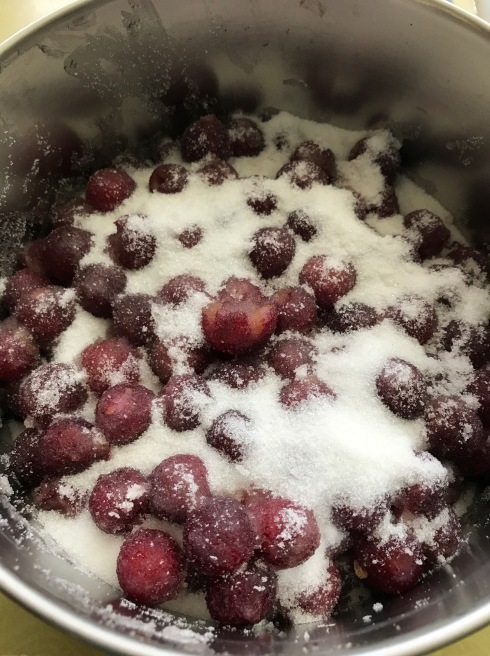
Pour the 1/2 cup of water into the bowl that held the cherries and swish it around to collect any remaining cherry juices, then pour that into the saucepan.
Cover and refrigerate overnight.
Gently stir the sugar and cherries and bring to a boil over high heat. Lower the heat and begin skimming off the foam that will rise to the top until no more foam appears.
Gently stir in the vanilla and continue to simmer until the syrup thickens. This may take a half hour, it may take longer. Greek grandmothers, I’m told, would take a spoon and dip it in the syrup. If the syrup dripped off the spoon readily, it wasn’t ready. If the syrup clung to the spoon and dripped off in individual drops, it was thick enough. One web site, kopiaste.org, suggested that the syrup was ready when a candy thermometer inserted into the pot reached 220 degrees Fahrenheit. You can use your judgement.
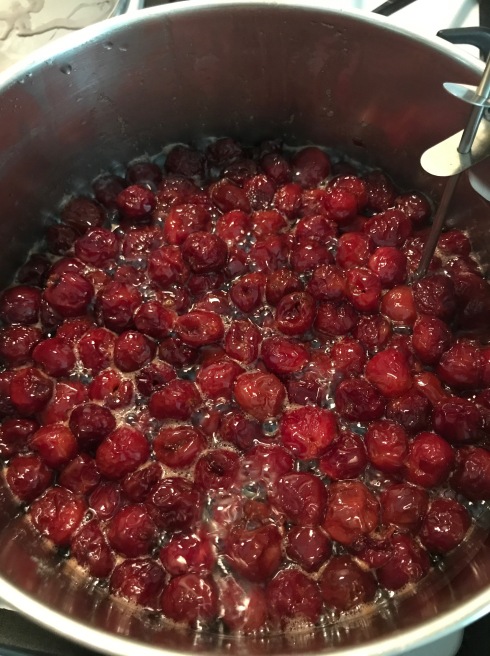
When the syrup has thickened, gently stir in the lemon juice and continue to simmer for one or two minutes more. Remove from heat, let cool completely, then pour into clean, airtight jars for storing.
Serve a teaspoonful of the sweet on a small plate, accompanied with a cold glass of water. This is also amazing on vanilla ice-cream, over creme brûlée or in crepes, as a topping for Greek yogurt — among other uses. So make several jars — they keep very well — and enjoy!
